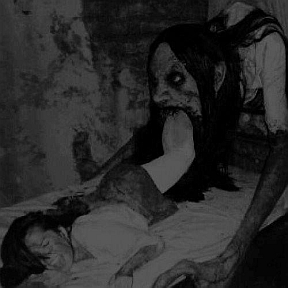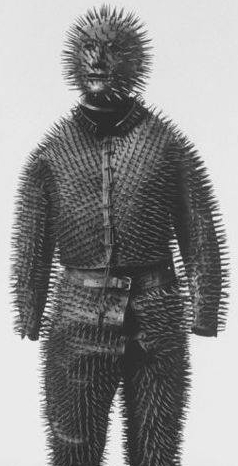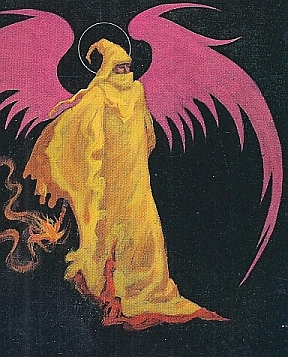A couple of days ago, I meandered through a post about Negative GMs to reach some basic ideas about a skill system for Swords & Wizardry. By the end of that post, I’d taken some inspiration from Barbarians of Lemuria and had also put together a list of things that a skill system should not include. Here’re what a skill system should be without:
1. Skill lists
2. Heat that melts special snowflakes
3. “No!” as the default answer
4. Any more than minimal modifications to Swords & Wizardry
BoL uses 2d6 for task resolution. The success number is always 9 or better, and certain modifiers apply to the dice, most of the modifiers providing bonuses. The task’s difficulty may apply a negative modifier. On 2d6 without modifiers, about 28% of rolls are going to end up 9 or higher.
For a S&W skill system, I’m leaning toward 2d12 since d12s don’t get enough table time. To get as close as possible to 28% success rate on 2d12 without modifiers, the target number is 16 or 17 or better (25% chance versus 31.25% chance, or a difference of 3% versus 3.25%). Since I like to make tasks easier rather than harder, let’s use 16+ on 2d12 for now.
So far, so good.
But (and There’s Always a Big But)
BoL‘s task resolution modifiers don’t mirror those available in S&W. In the former game, a character’s 2d6 roll will almost always be modified by an ability score and a combat (when fighting) or career rank (when not fighting). That could result in a +6 modifier for even a beginning character (+3 from an ability score and +3 from either combat rank or career rank). For 2d6 aiming at 9+, that’s a huge bonus that bumps the success rate to about 97%.
To mirror the effects of a beginning BoL best case scenario with S&W on 2d12, a 1st-level character would need about a +12 bonus. S&W characters don’t have these sorts of bonuses because S&W isn’t built with the same game engine as BoL. So, what does a 1st-level S&W character have that can be retooled for bonuses?:
1. Ability scores
2. Character class
3. Race
S&W doesn’t have careers like BoL. Character classes are sort of like careers, but not really. Sure, a fighter should be skilled at doing fighter things (such as bivouacking, riding, being intimidating, and repairing armor), but what if your fighter is also a pirate? A noble? For determining what a character can be skilled at, it seems as if character classes are more limiting than careers.
BoL‘s list of careers include alchemist, assassin, barbarian, beggar, blacksmith, dancer, farmer, gladiator, hunter, magician, mariner, merchant, mercenary, minstrel, noble, physician, pirate, priest, serving wench, scribe, sky pilot (!), slave, soldier, thief, torturer, and worker. That’s a pretty exhaustive list.
I like BoL‘s career concept. Every character starts with four careers and four points to divide between those careers. No career starts with more than 3 points allocated to it. A 0 career rank indicates basic training in that career. The careers themselves represent what the character did before he became an adventuring hero. Importing a career system into a game with character classes, however, presents certain difficulties.
For example, could a fighter (character class) have been a thief (career) before he became a fighter? Sure. Does that mean a fighter (character class) with a thief (career) in his past should be as good as a thief (character class) at doing thiefly things? Hardly, because that would melt a special snowflake.
Even if my WIP skill system facilitates a fighter do thiefly things, that thiefly fighter should not be better at those tasks than a thief (character class). A career like magician is even more problematic. I mean, anyone at least try to sneak, but not everyone should be able to cast spells.
I need some time to digest all that thought food.
Task Difficulty & Success
I like having a static target number for task resolution. It seems to make things easier. The player rolls the dice and applies modifiers. Is the total 16 or better? Yes? Success! No? Not success!
Of course, not all tasks are equally easy. A system with a static target number needs difficulty modifiers (which even a system without a static success number is going to have). I’ll take my cue from BoL, adjusting modifiers to account for the change from 2d6 to 2d12:
Difficulty: Modifier
Easy: +2
Moderate: +0
Tricky: -2
Hard: -4
Tough: -8
Demanding: -12
I’m also considering degrees of success based on the task resolution total. Right now, in my mind, the degrees look something like this:
Task Total: Degree of Success
16 or higher: Success. The character does what he set out to do.
14-15: Success, But. The character does what he set out to do, but with a complication, such as the task taking longer.
Below 15: Failure. The character does not do what he set out to do.
I want to introduce critical successes and critical failures as well. I’m looking at a natural 21-22 being a success with a minor benefit, and a natural 23-24 being a success with a major benefit. A natural 2-4 would be a failure with an additional complication. Monte Cook’s interesting Numenera proves inspirational here.
Anyhoo, that’s enough for now. Time for other activities while these ideas simmer beneath the surface.
Tags: Barbarians of Lemuria, game play, Swords & Wizardry





